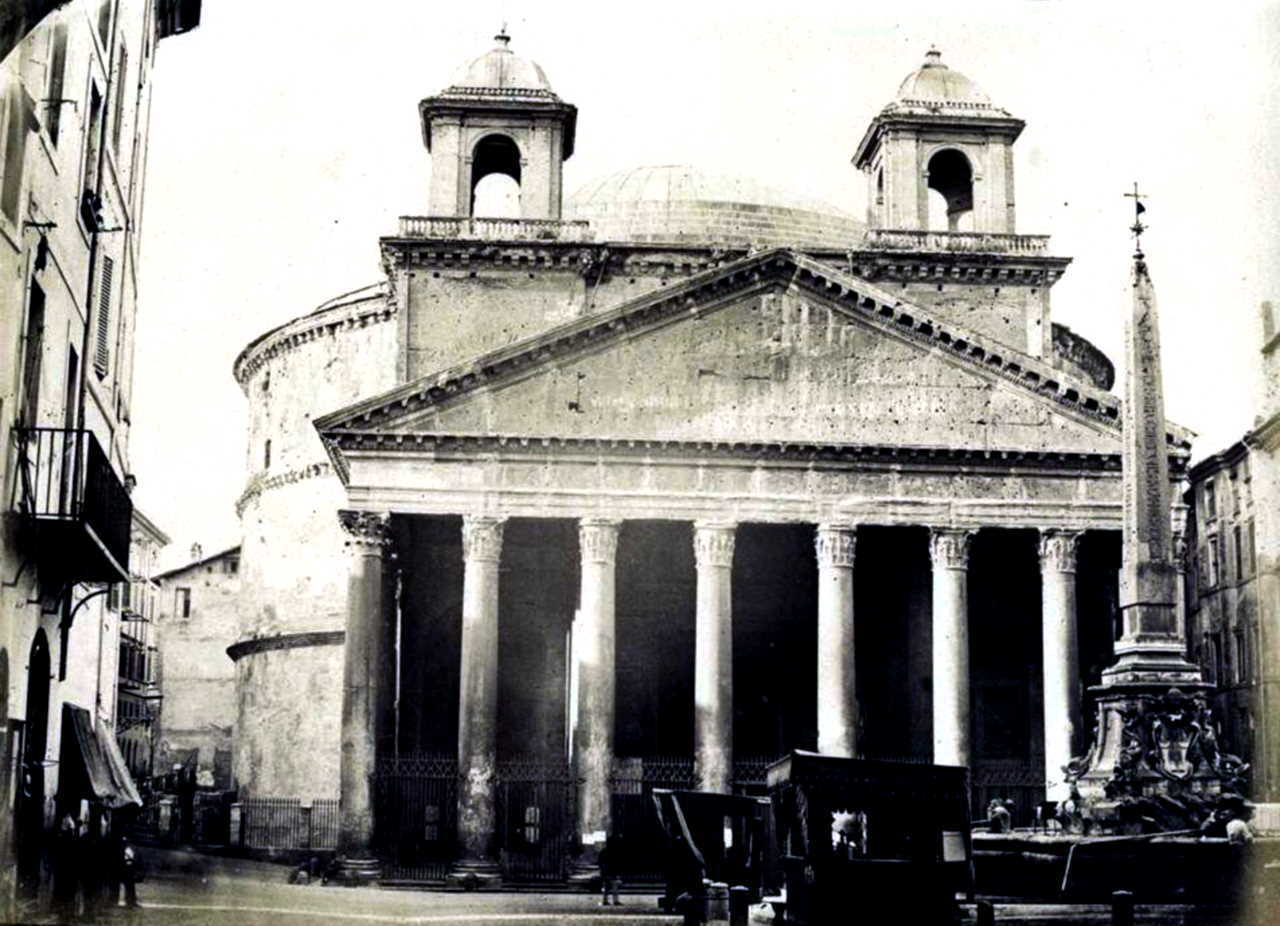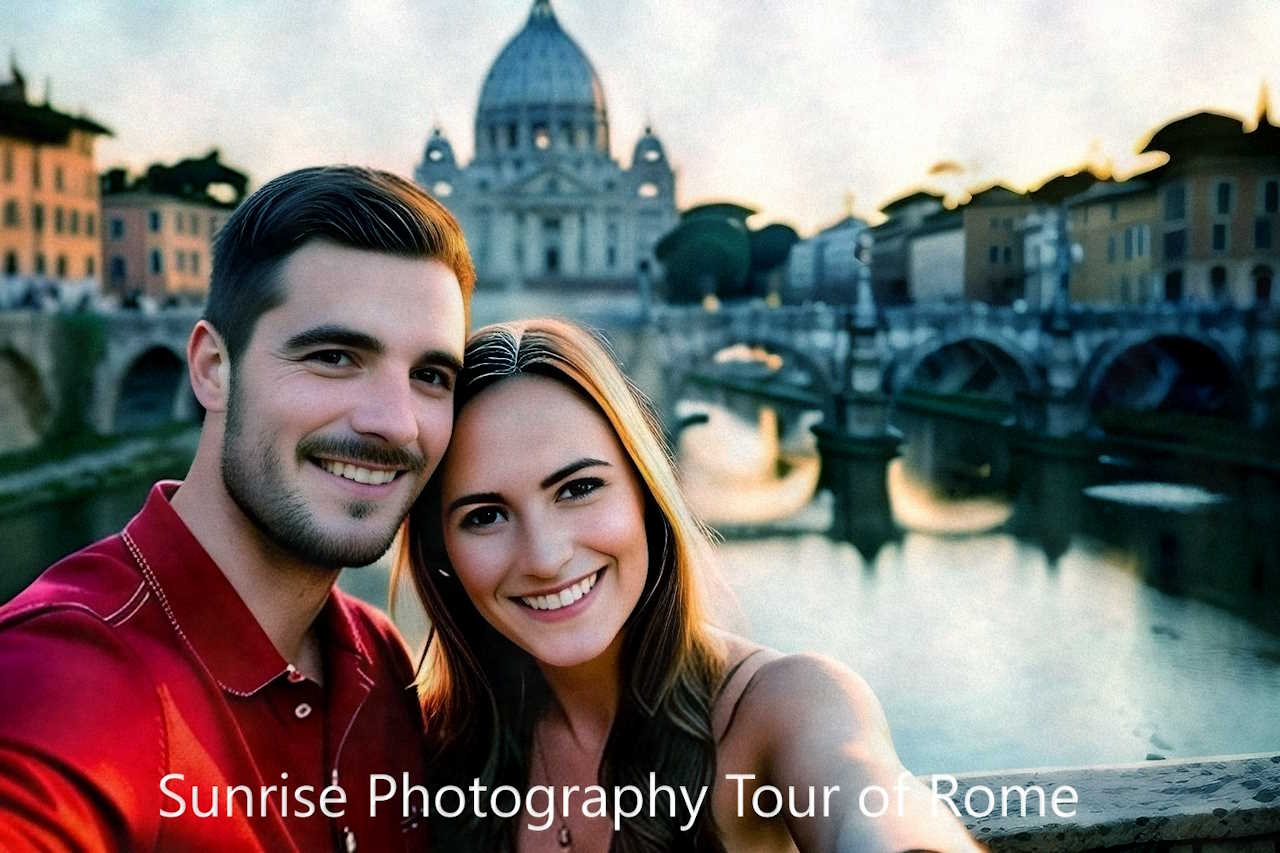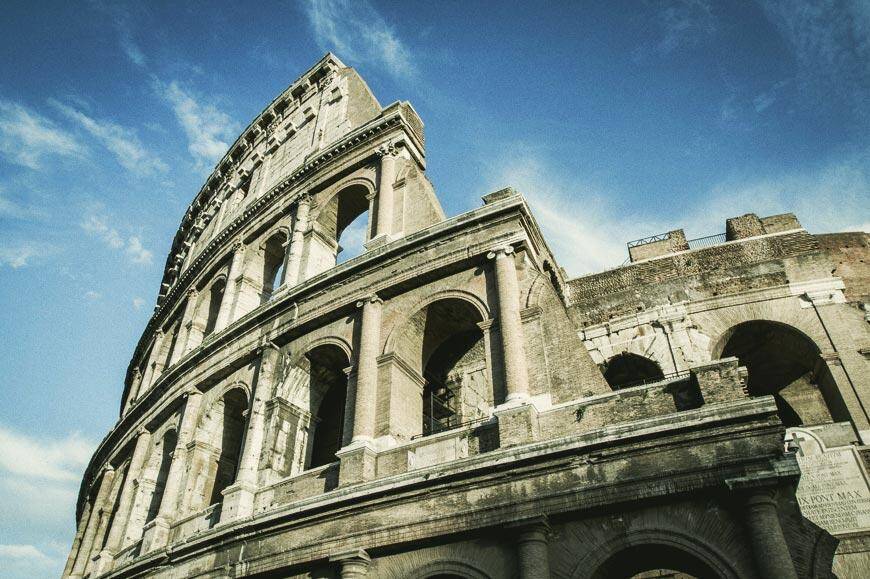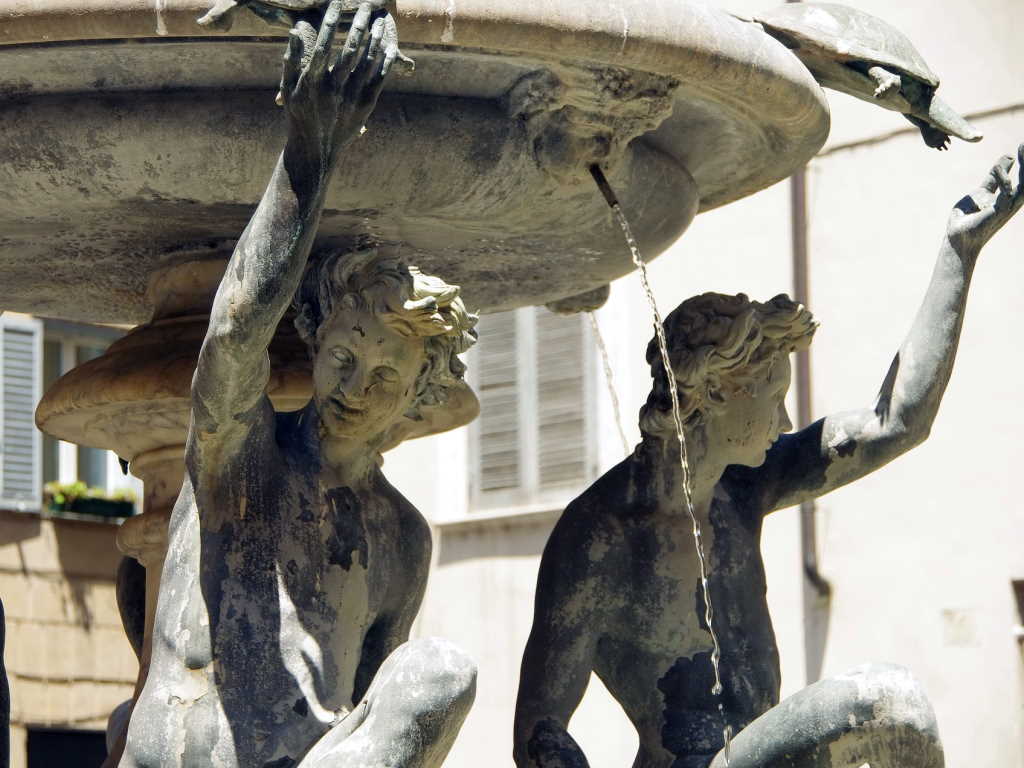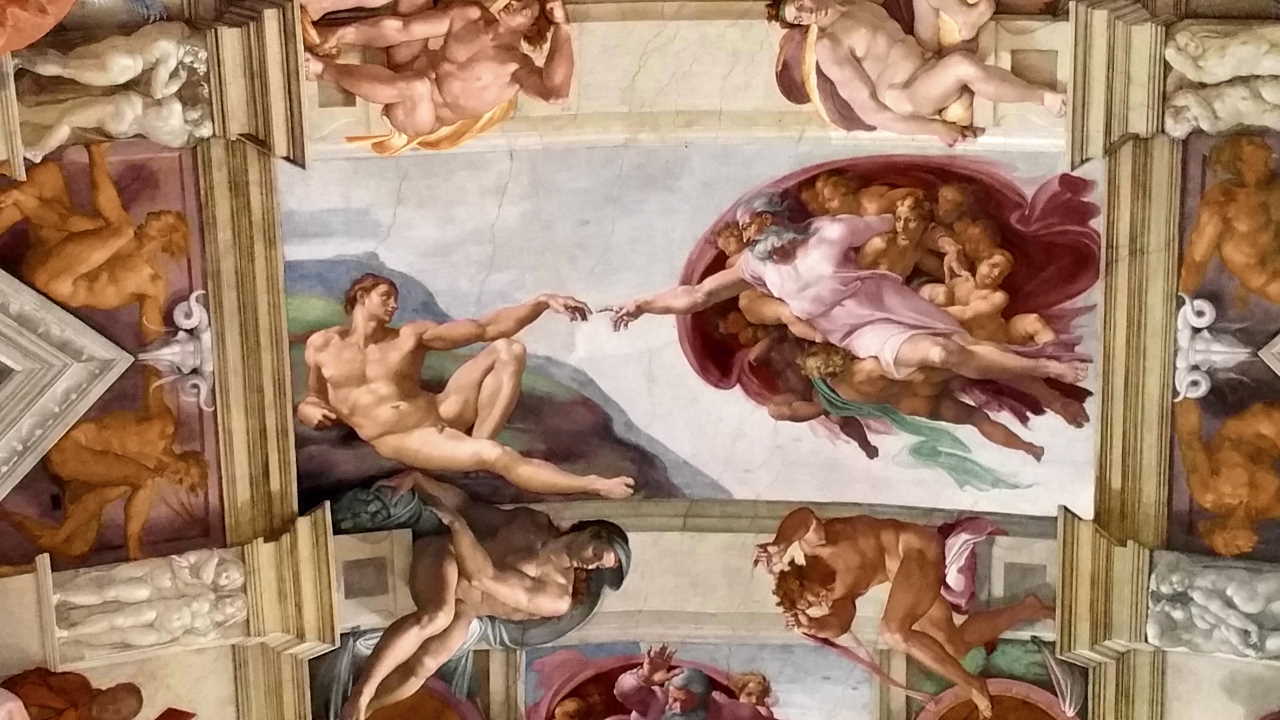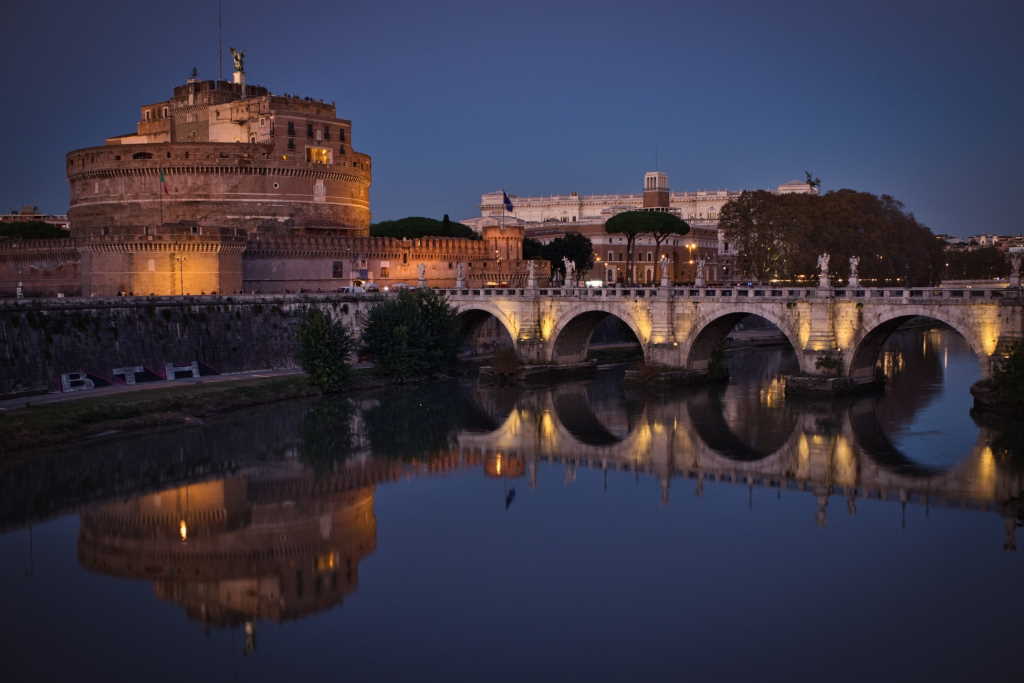Pantheon
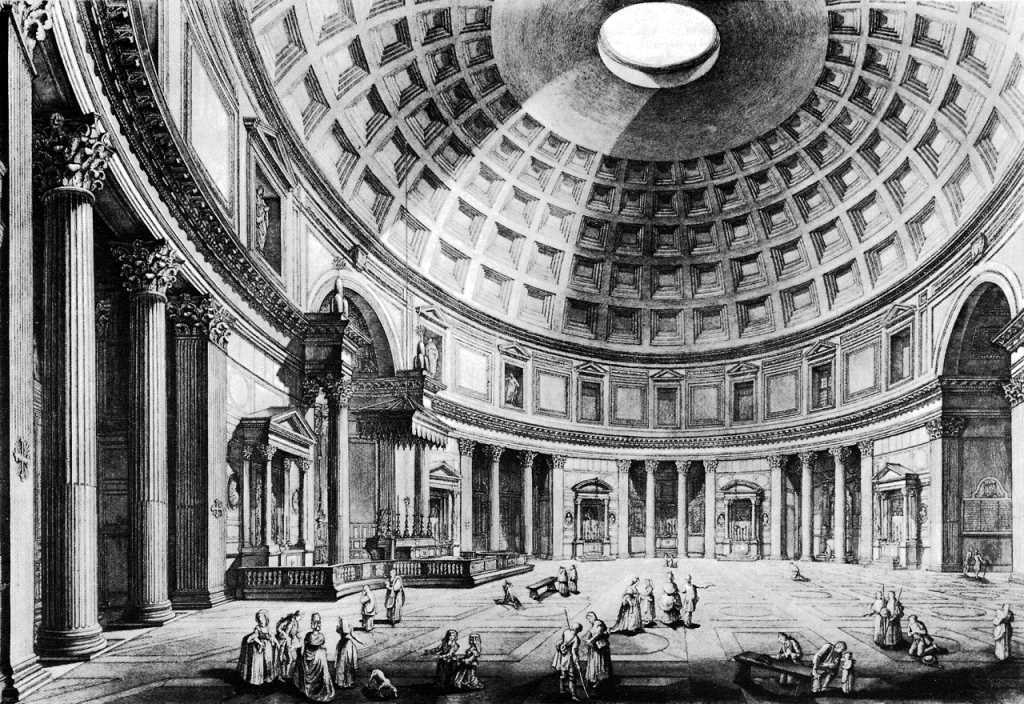
Contents
The Pantheon
Great masterpiece of Roman architecture. It is one of the ancient monuments best preserved in the world. We suggest a visit around noon, when the sun enters from the open eye on the top of the dome. Built by Agrippa and then rebuilt by Hadrian in 130 A.D.
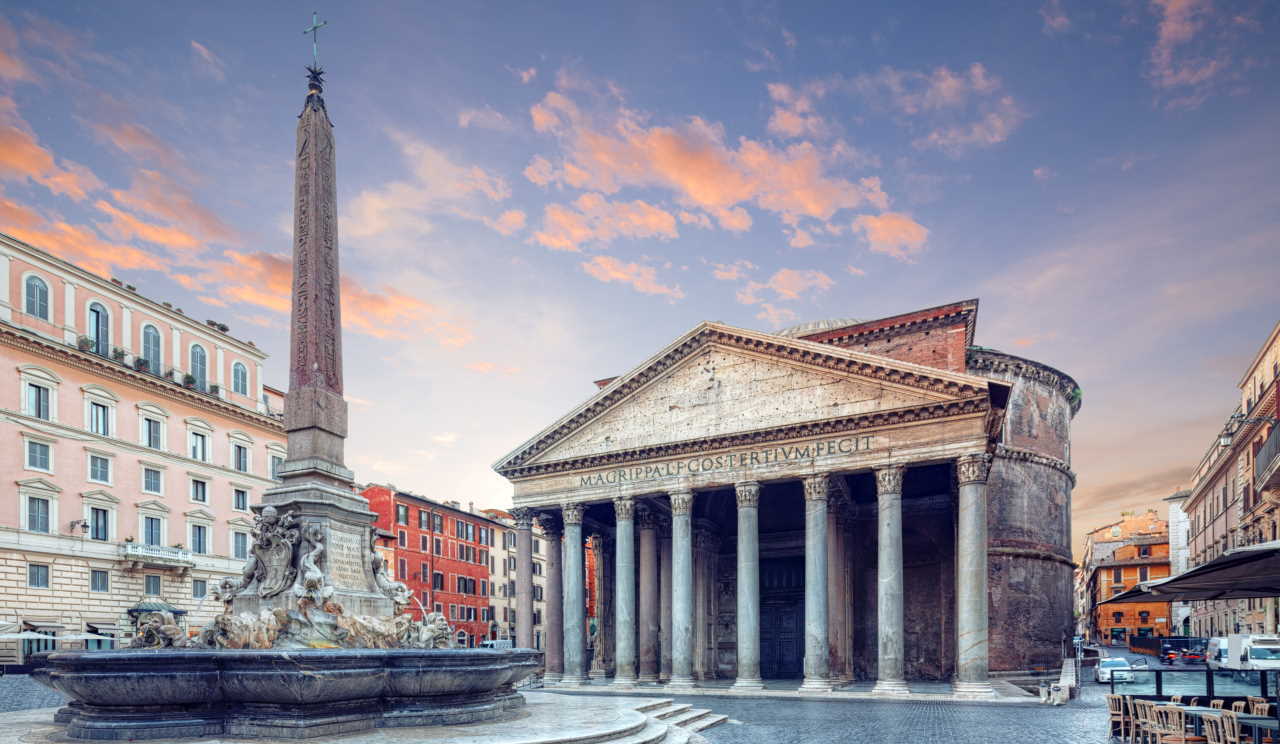
In 27 b.C., Agrippa, son-in-law and architect of Augustus, erected the Pantheon on the site where Romolus according to the legend ascended to Heaven during a ceremony. It was a common temple rectangular in shape, medium size, conceived as a place of worship for various divinities.
Through the years the temple suffered fires and other disasters, it was restaured several times till the final reconstruction by the emperor-architect Hadrian between 118 and 128 A.D.. The pronaos with its sixteen columns, the enlargement of the rotunda and the dome, the largest existing one built in brickwork up to our time, are for sure by Hadrian. Hadrian himself wishing to commemorate Agrippa replaced word for word on the temple’s façade Agrippa’s original inscription: “Marcus Agrippa, son of Lucius, Consul for the tird time, built”.
In 608 the emperor Foca handed it over to Pope Boniface IV who consacreted it as catholic church: Sancta Maria ad Martyres, masterpiece of the Roman architecture and first example of pagan temple transformed into catholic church. The temple stood originally on a base having a high staircase surrounded by a colonnaded portico on a lower level than the modern one. Originally the dome was externally covered by gilt bronze tiles stolen in 663 by the Emperor of East Constant II and later substituted by a lead covering in 735. The same happened to the bronze covering of the porticoes which was removed by the pope Urban VII and used for the casting of cannons and for the baldachin of St.Peter. Not many things were added to the original architecture: the church decorations, the tombs of great artists (Raphael) and those of the Kings of Italy. Bernini added two ugly bell towers called “asses’ears” demolished at the end of the 1800’s.
Inside the Pantheon there are also honorary busts which Pius VII had removed and transported to the Capitole, inside the Gallery (collection of busts of illustrious men) Nowadays the lack of coverings reveals the original brickwork structure with weight and thrust which support the ring. The pronaos hides the cupola from sights till the entrance in the space determined by a sphere which can be inscribed in a cylinder, finished and unfinished together. The floor is covered with polychromatic marbles so as the walls which support the huge cupola culminating in the great eye at the summit, 9mt wide, which illuminated the whole interior and served for the smoke of the sacrifices.
The axes of the building contemplates a small divertion from the traditional north-south direction: every year on the 21st June at 12,00am, summer equinoce, the sun through the eye invests the visitors entering from the main door.
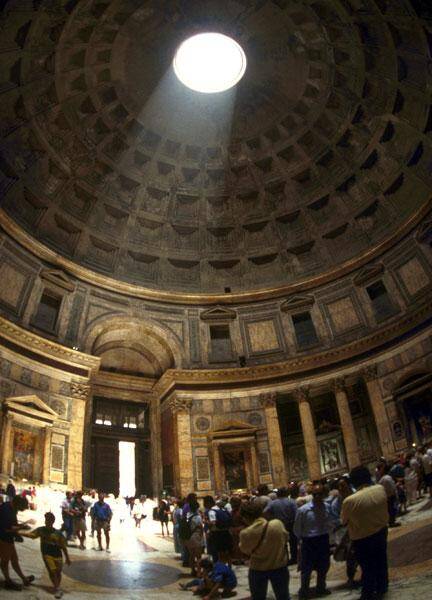
Piazza della Rotonda
Dominated by the Pantheon all around there are buildings of the 1700’s built on the ruins of the ancient portico, market-place till the first half of the 1900’s. At the centre there is a beautiful fountain by della Porta with a small obelisk
This square is right in front of the Pantheon and this grandiose monument characterizes it to such an extent that many Romans don’t know even its name: they call it simply “square of the Pantheon”
In the middle of the square, characterized by the façades of the XVIIIcentury’s palaces which surround it, stands the elegant marble fountain decorated with dolphins and maskarons made in the time of Clement XI, who had it surmounted with an obelisk in 1711. The fountain was projected by Della Porta.
Two curiousities are note worthies: a plaque on the wall of the edifice right in front of the Pantheon which reminds us when the square , in the XVIII century, was cleared from taverns and brothels by the papal authority; another plaque, on the façade of the palace that houses today the hotel “Del Sole”, reminds that the poet Torquato Tasso overnighted here. The English movie director Peter Greenaway chose the square as set for many sequences of his movie ” The Belly of an Architect “.
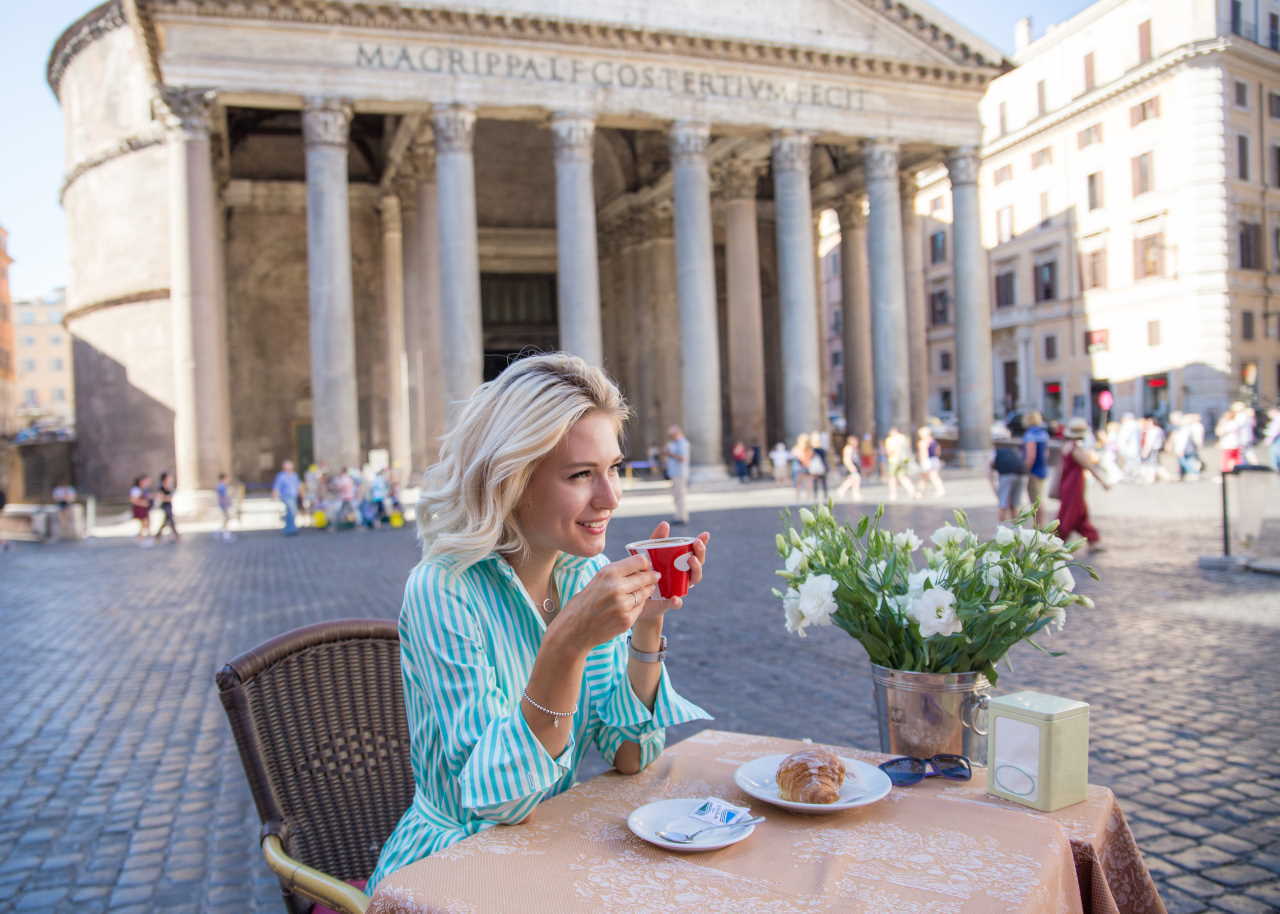
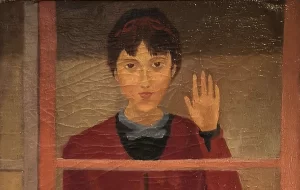
ITALY SPECIAL 2024: A selection of unmissable events and exhibitions!
Get ready to embark on an extraordinary journey through the beauty of Italy, marking the most significant dates of 2024 and planning an unforgettable experience. This year, we’ll guide you through an exceptional selection of unmissable events that encompass art, music, gastronomy, and technology.
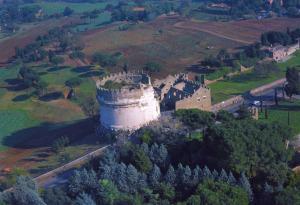
Ancient Appian Way, the highway of Ancient Rome
Known as the “Queen of Roads,” the ancient Appian Way in Rome is one of the most important engineering marvels of all time, a tangible testament to the greatness and mastery of Roman civilization.
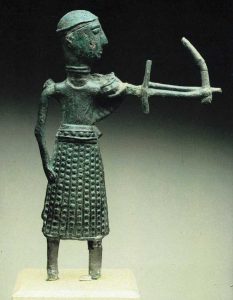
Museums to visit in Italy
The museums in Italy offer visitors a rich array of themes, types, and locations, making them a unique experience. Some of the world’s most historically and culturally significant museums welcome visitors to immerse themselves in the depths of Italian history and art.
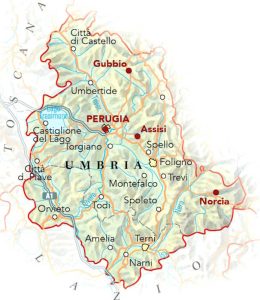
Umbria, land of history, art, nature, religion and flavours
Umbria is a reality suspended between the richness of its history, the depth of its culture, and the majesty of its nature. Located in the heart of Italy, between Tuscany, Marche, and Lazio, it is the only region on the peninsula without a coastline. Also known as the “green heart of Italy,” Umbria is a destination that provides a variety of experiences for visitors.

How I found a wife with Italian cuisine – Rome cooking class
Rome is a fantastic city to take a cooking class, with a rich culinary history and culture. With a little research, you can find the perfect cooking class for your needs

Luxury Vintage Shopping in Rome
The story of an experience lived in Rome, a four-hour shopping tour with an expert guide and a luxury car with driver to discover the best vintage luxury shops in the Capital
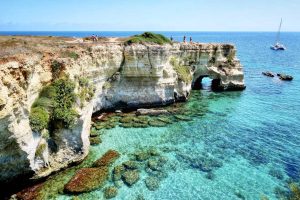
Trip to Puglia, a land to discover
Puglia is truly a land to discover, a hidden treasure in the heart of the Mediterranean. With its temperate climate and four distinct seasons, this region offers a unique tourist experience throughout the year
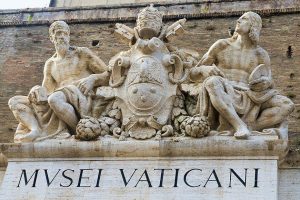
Entrance to the Vatican Museums and Sistine Chapel 2024 and 2025
The Vatican Museums and Sistine Chapel are about to introduce significant changes to their visiting schedule to optimize the use of their collections and provide a more inclusive experience for visitors, leading up to the Jubilee of 2025 in Rome. These changes will take effect on January 1st, 2024.
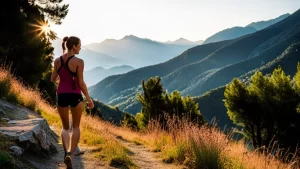
Italy: unconventional experiences for adventurous travellers
Italy is a country that offers a wide range of original and extreme experiences for the most adventurous travelers. Whether it’s exploring the depths of the sea, climbing imposing mountains, or immersing oneself in the rich culinary tradition of the country, there is something for everyone looking for authentic and unique thrills. Italy invites travelers to push their limits, discover new horizons, and live an experience that will remain imprinted in their memory.
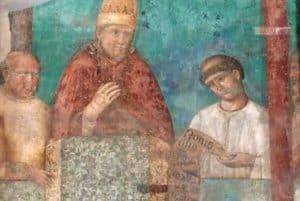
The pilgrimage in Italy
The tradition of pilgrimages in Italy is an integral part of the social, cultural, and religious fabric of the country. Throughout centuries of history, this practice has shaped individual and collective identities, enriching the spiritual and cultural life of those who undertake the journey. Pilgrimage remains a meaningful experience, reflecting mankind’s search for meaning and connection, and a link between the past, present, and future.

The 5 most loved Italian dishes in the world
Italy, the birthplace of gastronomy, is universally recognized for its rich and diverse cuisine that reflects centuries of culinary traditions passed down from generation to generation. While not everyone can afford to enjoy Italian dishes in a Michelin-starred restaurant, it is possible to experience the magic of Italian cuisine by preparing some of the most beloved dishes directly at home. Here are the five most loved Italian dishes in the world, along with their recipes and secrets for successfully replicating them in your own kitchen
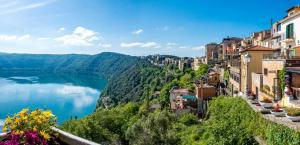
The Roman Castles, “invisible castles”
The Roman Castles, also known as the “invisible castles”, are historical places located near Rome, famous for their scenic beauty and gourmet food and wine tradition. Despite their rich history and natural attractions, these places often go unnoticed due to Rome’s extraordinary artistic wealth.
The very birth of Rome is linked to the events of Alba Longa, probably the current Castel Gandolfo, founded by Ascanio, son of Aeneas and Creusa in 1230 BC.
Private Tours of Rome
-
Rome Private Tour by Car for 3 hours
106,00€ – 229,00€Tour of the main attractions of Rome by Car and Private Guide, without worry about the weather or long walks
Ask for PROMO code
Rome | Private Guide | By car | 3 hrs.
-
Photography Tour of Rome at Sunrise
106,00€ – 438,00€A unique experience to capture the essence of Rome at dawn!
Request the PROMO code!
Rome | Privat Guide | Auto- Golf Car | 3 hours
-
Colosseum and Ancient Rome Private Tour
95,00€ – 209,00€The ideal tour to explore with a passionate guide the Roman Forum, Capitol Hill, Imperial Fora and the Colosseum
Rome | Walking Tour | Private Guide | 3 hrs.
-
Jewish Ghetto Trastevere Private Tour
58,00€ – 131,00€Private walking tour in the heart of Rome: the Jewish Ghetto, the Synagogue, Tiberine Island and Trastevere
Rome | Walking Tour | Private Guide | 3 hrs.
-
Private Tour Vatican Museums and Sistine Chapel
141,00€ – 278,00€Skip the line Private Vatican Tour, a fascinating 3-hours itinerary to admire the masterpieces of the Vatican Museums, Sistine Chapel, St Peter’s Basilica
Rome | Walking Tour | Private Guide | 3 hrs.
-
Rome by Night Tour – Private Driver and Guide
93,00€ – 242,00€Welcome to "Rome by Night with Private Driver and Guide"
Rome | By night Tour | Private Car | 2 hrs.

